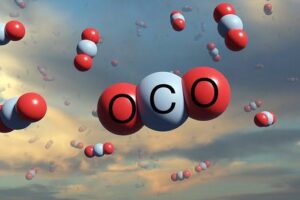APPLICATIONS OF TECHNOLOGY:
- Synthesis of complex, multi-carbon products (e.g., drop-in biofuels, biomaterials, and commodity chemicals) directly from renewable power and CO2
BENEFITS:
- Challenges with toxicity generated by electrolysis are overcome via use of the resilient strain Ralstonia metallidurans
- Simplifies the overall system and leverages electrolyzer for gas transfer with no efficiency loss from gas separation membranes
- Reduces system cost, saves substantial energy, and enables more flexibility with the electrolysis configuration
- Enables direct production of long-chain hydrocarbons
BACKGROUND:
- There are a number of challenges for integration of electrolysis and fermentation: product specificity and flexibility, conversion efficiency and intensity, gas transfer efficiency, and interface of biology and electrochemistry. The primary challenge is harmonization of electrolysis and fermentation conditions, coupled with toxicity generated at the electrodes. To overcome this toxicity using the canonical strain Ralstonia eutropha, previous demonstrations of similar integrated systems have relied on novel, biocompatible electrodes. However, use of higher cost biocompatible electrodes may compromise overall economics.
- In contrast, Ralstonia metallidurans has natural resistance to heavy metal toxicity, high affinity for hydrogen and CO2, and high tolerance for oxygen. It has a flexible metabolism and can be engineered for production of complex, multi-carbon products.
TECHNOLOGY OVERVIEW:
Researchers at Berkeley Lab have developed a novel invention that enables the combination of water-splitting electrolysis and microbial hydrogen fermentation into a single vessel.
They leveraged the robust non-canonical microbial strain Ralstonia metallidurans to achieve a high level of performance with a conventional stainless/Pt cathode and Ir anode. OD600 >1 was achieved in four days with carbon supply optimization. This strain is genetically tractable, and researchers have now demonstrated engineering of R. metallidurans to express a type III PKS and produce the pigment molecule flaviolin.
The one pot electrolysis and fermentation platform could replace sugar with
electricity/CO2 as a biochemical feedstock and petrochemical fuel and chemical production with production from electricity/CO2. The process would allow distributed and flexible generation of chemicals.
DEVELOPMENT STAGE: Proven principle
PRINCIPAL INVESTIGATORS:
STATUS: Patent pending.
OPPORTUNITIES: Available for licensing or collaborative research.
SEE THESE OTHER BERKELEY LAB TECHNOLOGIES IN THIS FIELD:
A One-Pot Biomass Conversion Process Using Deep Eutectic Solvents 2016-160
